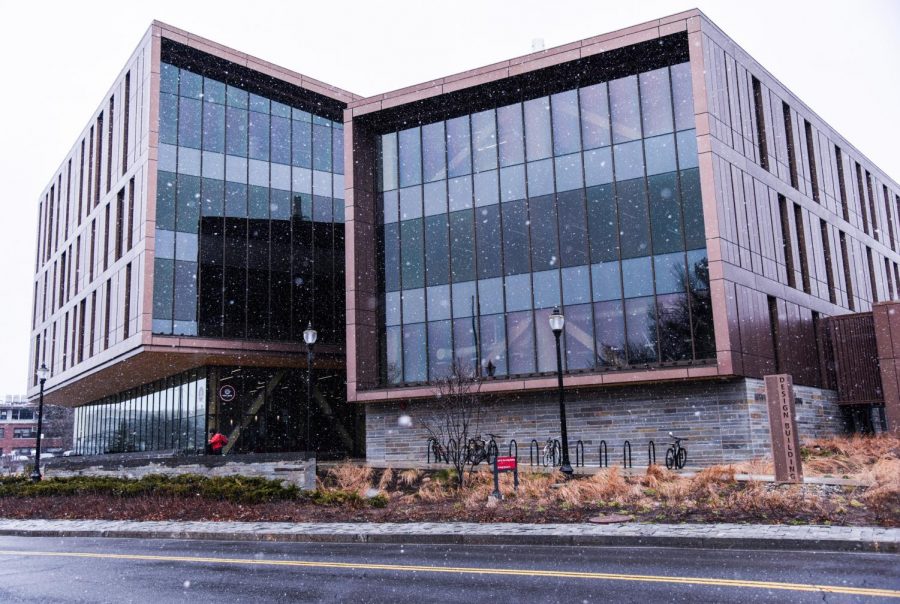The University of Massachusetts’ John W. Olver Design Building has earned LEED Gold certification, adding to the already extensive list of accolades it has been awarded since opening in 2017.
LEED certification, which stands for Leadership in Energy and Environmental Design, is a globally recognized architectural rating system in sustainability assigned by the U.S. Green Building Council. According to the USGBC website, projects that wish to be LEED certified must earn points across an array of categories such energy and resource efficiency. Rating levels range from Certified (the lowest), to Silver, Gold and Platinum (the highest).
The four-story Design Building and its 87,500 gross square feet of space house three of the University’s fields of study: the department of architecture, the department of landscape architecture and regional planning and the building and construction technology program, according to the building and construction technology website.
Designed by the Boston-based architectural firm Leers Weinzapfel Associates, the structure is noted for its technologically advanced cross-laminated timber and a wood-concrete composite floor system, the first of its kind to be used in the United States. The BCT added it is “the largest and most technologically advanced academic contemporary wood structure in the U.S.”
According to UMass News & Media Relations, there several key sustainability features that helped the Design Building secure the feat of LEED Gold certification. Among these include its location on North Pleasant Street close to the center of campus, making the site walkable while also having access to public transportation. Additionally, the building features a low-energy lighting design and a high-performance insulating envelope which save an estimated 42.85 percent annually on energy costs.
The building also saves water with efficient fixtures that reduce potable water waste by 35 percent below standards set by the Energy Policy Act of 2005 and a drip irrigation system that reduces consumption by two thirds comparatively. The Design Building also features extensive vegetation with over 20 percent native plant species on site and a vegetated green roof that helps to mitigate the heat island effect as well as a rooftop garden.
During its construction, UMass News & Media Relations reports that “88 percent of construction waste materials were diverted from landfill” and “10.7 percent of the total building materials (by cost) was manufactured using recycled materials and 13.8 percent were regionally sourced.”
Previously, the Design Building was cited as “one of the best new buildings of 2017” by the Wall Street Journal, named the jury’s choice for wood innovation at the WoodWorks 2018 Wood Design Awards in February, received an excellence award for general design in landscape architecture from the Society for College and University Planning in July and was awarded the designation of U.S. Building of the Year from the network American-Architects via an online poll.
The design building was built at a cost of $52 million according to UMass Campus Planning. It owes its name to retired Massachusetts congressman and former UMass chemistry professor John W. Olver, who helped advocate for the project and its mass timber design through securing additional state funding.
Additionally, this wood focused design “saves the equivalent of more than 2,300 metric tons of carbon when compared to a traditional energy-intensive steel and concrete building,” according to UMass News & Media Relations.
Sophomore architecture major Jordan Luther, who’s also pursuing minors in French, art and art history, takes classes in the Design Building. Luther admired the building’s LEED Gold certification saying, “It’s really wonderful, especially being an architecture major.”
She noted that during this year’s finals season she and her classmates have spent greater amounts of time than usual inside the space adding, “I’m finding that everyone spends more and more time here than we even imagine. We just spent about four to five days straight here so knowing that it’s so sustainable makes it all the better.”
Chris McLaughlin can be reached at [email protected] and followed on Twitter @ChrisMcLJournal.




















